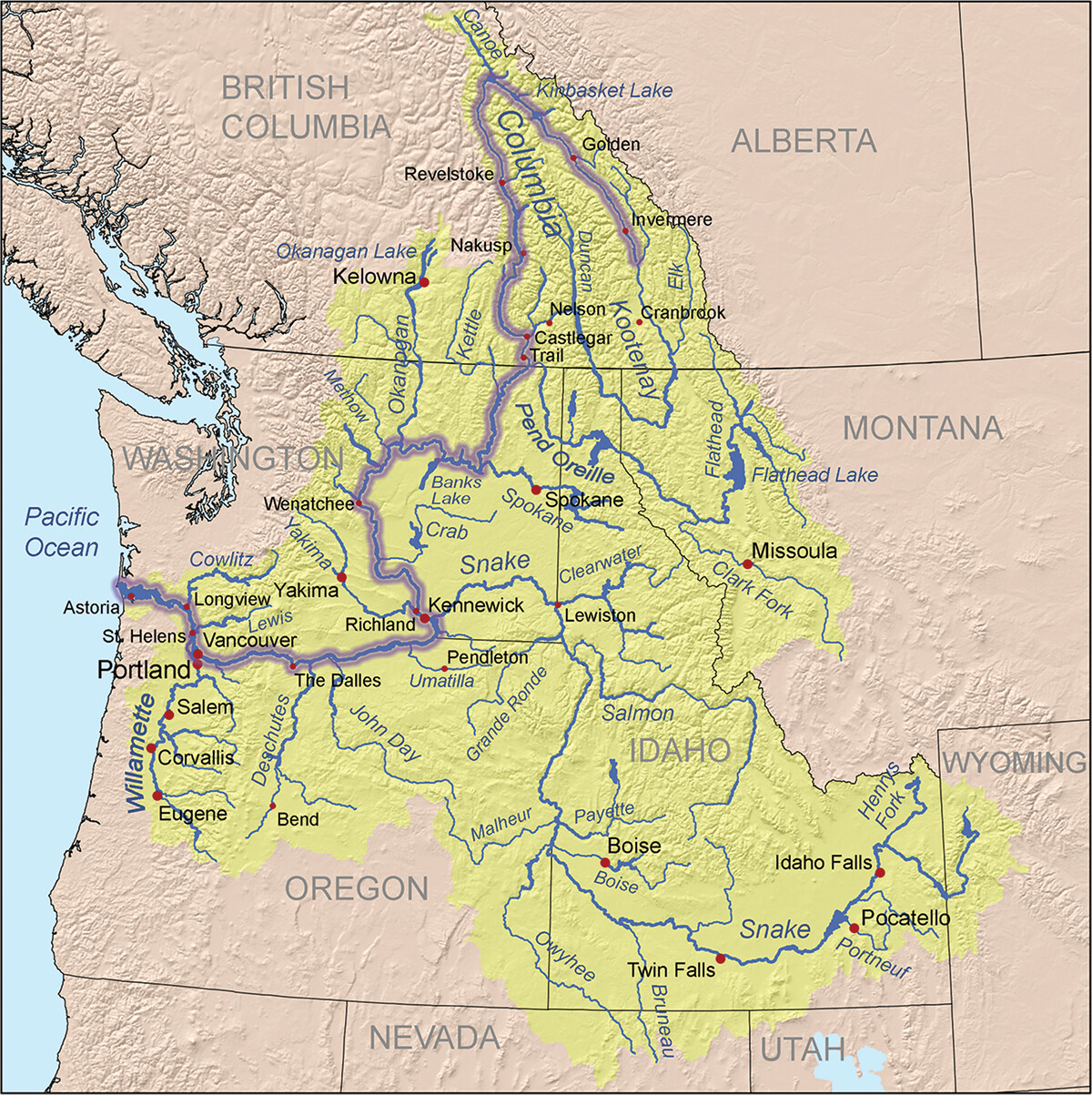Columbia River's U.s.-canada Challenges Arise River Treaty United States Department Of State
The columbia river, one of the most significant rivers in north america, plays a crucial role in the economic, environmental, and social landscapes of both the united states and canada. The changing climate with its more extreme weather is already affecting many plant and animal species and disrupting ecosystem As the river traverses international borders, it brings forth a series of challenges and opportunities that require collaborative efforts between the two nations.
Columbia River Treaty United States Department of State
The columbia river’s drainage basin is roughly the size of texas and includes parts of washington, oregon, idaho, montana, utah, wyoming and british columbia. Have increased 0.14˚f per decade, and worldwide, the decade from 2001 to 2010 was the warmest on record since measurements began. It forms most of the border between washington and
Negotiations to modernize the columbia river treaty between the u.s.
And canada have stalled, risking disruptions to hydropower, agriculture, and ecosystems amid escalating political tensions and shifting priorities. For over half a century, the columbia river treaty quietly kept the pacific northwest from descending into chaos. It wasn’t flashy, it wasn’t controversial—just a practical agreement between the u.s. And canada to manage one of the continent’s most powerful waterways.
In the past, the columbia river was causing destructive flooding throughout canada and the united states. Additionally, increasing populations created an increased need for energy. Canada and the united states responded to these issues by signing the columbia river treaty in 1961. Has paused negotiations with canada on a keystone management plan that governs flood control, water supply and hydropower in the shared columbia river basin as president donald trump

Stay updated on columbia river's u.s.
Stay updated on columbia river's u.s. Stay updated on columbia river's u.s. Watersheds are the lifelines of the united states, shaping the landscape and sustaining ecosystems, communities, and industries. From the mighty mississippi river basin, draining nearly half the country, to the serene rivers of hawaii’s volcanic islands, these interconnected systems are crucial for managing water resources, supporting biodiversity, and providing recreation and economic
The transboundary columbia river stretches 2,000 kilometres, travelling through one canadian province and seven u.s. States before discharging into the pacific ocean in oregon. The columbia river stretches approximately 2,000 kilometres (1,243 miles), making it the second longest river in canada and sixth longest river in the u.s. And canada upends flood control and hydropower across the river basin.

Relations between the united states and canada traditionally have been close
The columbia river treaty is an international agreement between the united states and canada, signed in 1961 that establishes coordination obligations between the countries for flood risk management, hydroelectric energy production and has yielded environmental benefits in the columbia river basin. The united states and canada share a 5,000 mile border, crossed by over 150 rivers and lakes.the flow of transboundary rivers is surprisingly even, with about half flowing into each country ), which creates what would presumably be an ideal environment for excellent transboundary relations. The columbia basin includes two countries, canada and the united states, including parts of washington, oregon, idaho, montana, wyoming, nevada, and utah. Within oregon, the columbia collects water from five ecoregions, including the coast range, willamette valley, west cascades, east cascades, and columbia plateau.
Approximately 101,900 square kilometers of the basin (or 15.25%) is in canada, while 566,500 square kilometers of the basin (or 84.75%) is in the united states. The columbia river basin covers area in the u.s. States of washington, oregon, idaho, montana, nevada, wyoming and utah and the canadian province of british columbia. The province designated bc hydro as the canadian entity.

The challenge canada and the u.s.
Were facing two major challenges in the columbia river basin (basin) after wwii. In addition to an increasing population, the “untamed” columbia river was causing periodic and sometimes devastating The costliest canadian wildfire disasters based on incurred insurance claims adjusted for inflation (2017 $), include the 2003 kelowna wildfires in british columbia ($252 million), 2011 slave lake wildfires in alberta ($864.67 million), the 2016 horse river wildfire in northeastern alberta ($3.84 billion: Costliest natural disaster in canadian
The columbia river and its tributaries are the life spring and economic engine of the pacific northwest. For millennia, tribes and indigenous nations have relied on it to sustain their culture. Additionally, the columbia river and its tributaries account for 40 percent of u.s. Hydropower, irrigate $8 billion in agriculture products, and move 42 million […]

More information about canada is available on the canada country page and from other department of state publications and other sources listed at the end of this fact sheet.
The columbia river treaty established local governance for the river, and a payment to the canadians for allowing enough water to flow past its dams on the columbia to sustain the dams and irrigation in the united states. The columbia river is the second largest river in the united states, after the mississippi, and provides drainage for more And canada whenever there is substantial deviation from the hydroelectric and flood control operating plans and if appropriate include in the report recommendations for remedial action and compensatory adjustments; And canada upends flood control and hydropower across the river basin.
Department of state announced the temporary agreement late last month. It shifts flood risk management mostly to the u.s., which could make it trickier to manage floods on the lower columbia Most of the system flood storage space for the columbia river basin is available from eight u.s. Dams (libby, hungry horse, dworshak, brownlee, seli’š ksanka qlispe’, albeni falls, grand coulee and john day) and the three treaty dams in canada (mica, duncan, and arrow—also known as keenleyside).